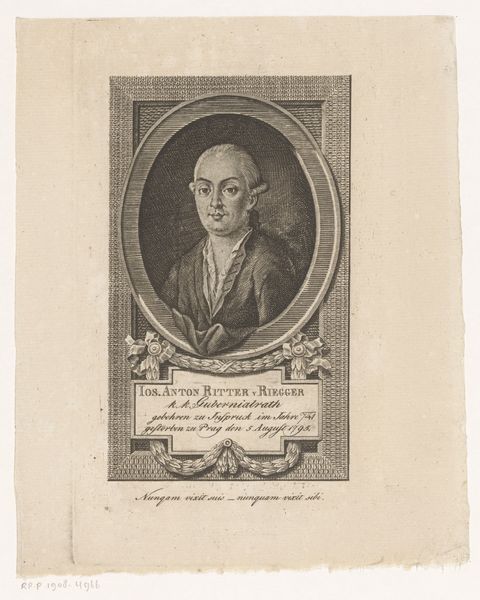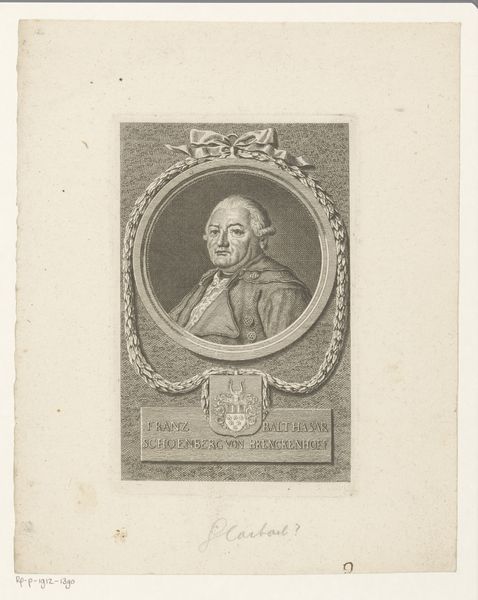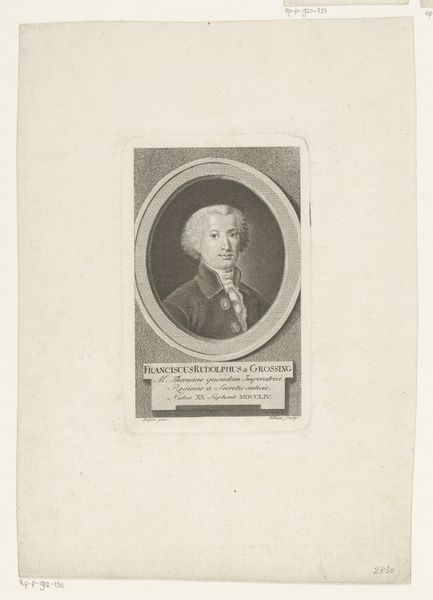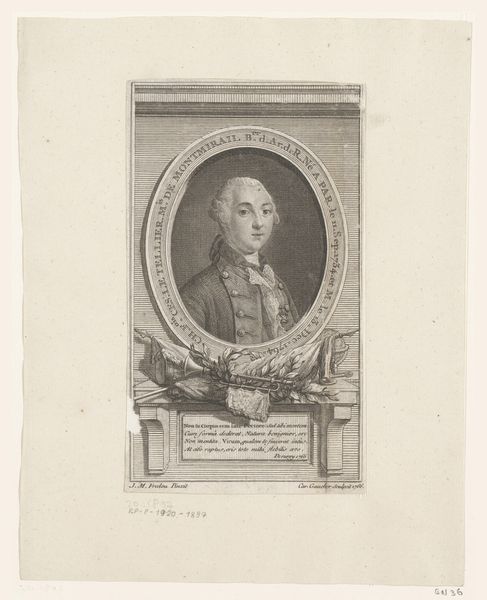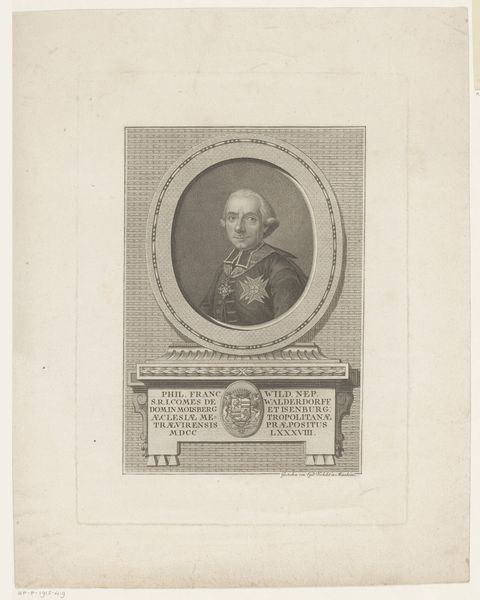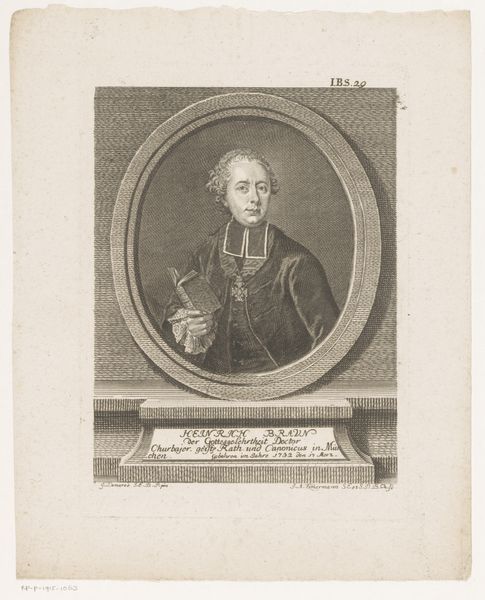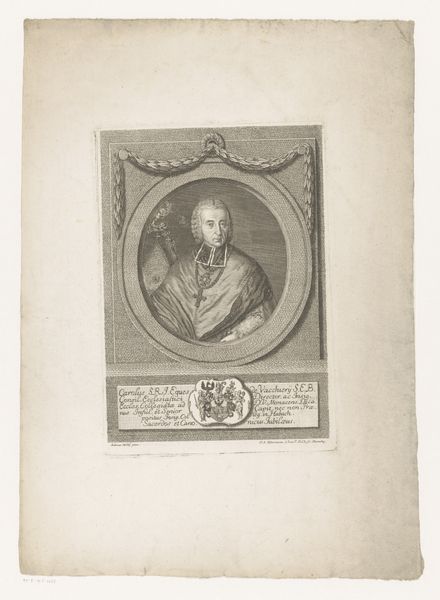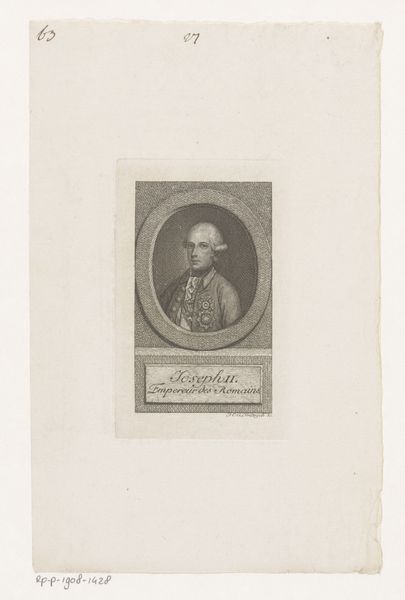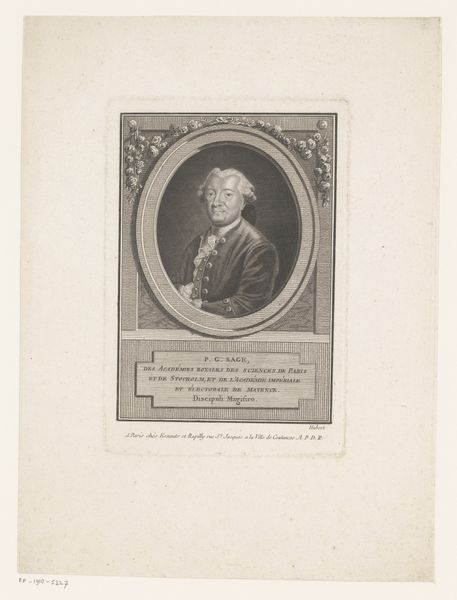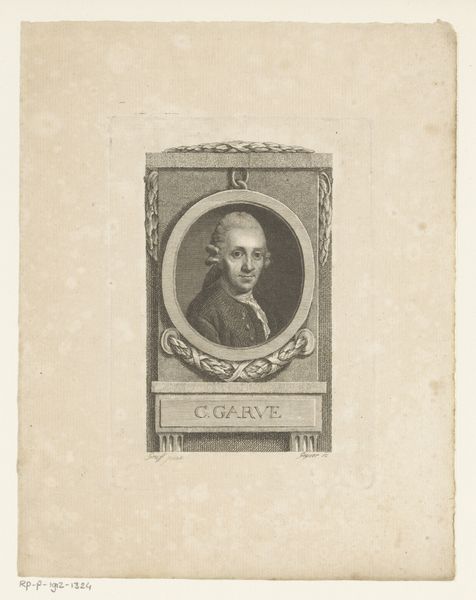
Dimensions: height 184 mm, width 124 mm
Copyright: Rijks Museum: Open Domain
Curator: Here we have “Portret van mijnheer Joseph,” a drawing that's been preserved as a print and engraving from somewhere between 1773 and 1806 by Pierre Adrien Le Beau, found here at the Rijksmuseum. Editor: Well, my first thought is this image has such a formally restrained quality, very balanced. It almost feels like I am peering through a window into a past where people took being presentable with utmost gravity! I suppose it’s that Baroque portraiture, so conscious of projecting the proper image. Curator: Indeed! The oval frame decorated with a bow—note the very clean lines in the engraving work—presents Joseph almost as if he were a jewel. What's interesting is the text below, though. "Joseph, mute, found on the road." Editor: Wait, mute? That puts a whole new spin on it. This boy, presented so formally, was actually… vulnerable. Did he go missing then re-appear only to be mute? Curator: Likely yes, which connects to larger historical anxieties, that are reflected and projected via the arts and its iconography. Think about the emphasis on order during this time... this image almost betrays the chaos lurking underneath, of lost identities. Editor: The bow itself suddenly feels less decorative and more like a symbolic tying up, or restricting, Joseph's own voice or freedom! Maybe that is Baroque after all—appearances masking all manner of hidden darkness! But why frame him? Curator: I would argue this could be both, protective but also constricting. This style aimed to give prominence to identity and status but also had to contend with underlying threats, social mobility being disrupted and creating new vulnerabilities, so he must present well in portrait, framed, composed…but maybe his situation, that the description shares, complicates things too much for a full narrative so you give that visual and textually as an enigma instead, maybe also because this status could be claimed and then quickly gone. Editor: I see. In fact, thinking about Joseph in this rigid portrait form is almost tragic in its irony given what he faced. Curator: Perhaps an early commentary of the performative aspects of portraits which can mask more profound questions about self and representation. Editor: It gives one plenty to reflect on. Now when I see the clean lines I read sadness and social concerns which connect to our time period. Thank you!
Comments
No comments
Be the first to comment and join the conversation on the ultimate creative platform.


